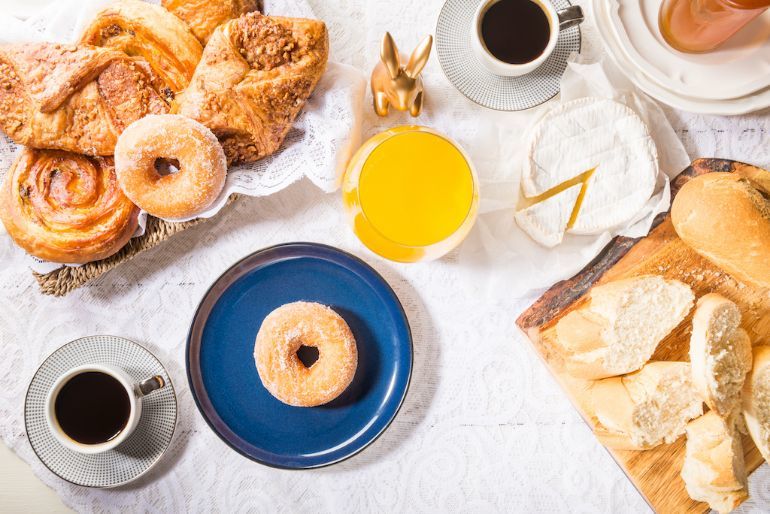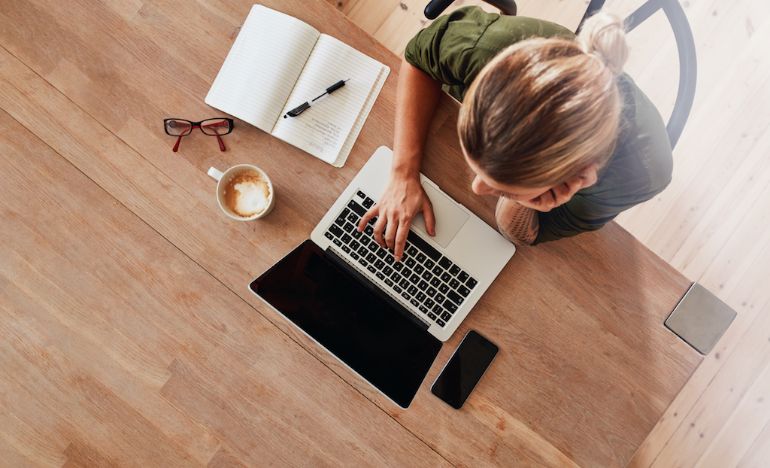In life, there are no guarantees – except death and taxes.
In restaurant life, there are no guarantees, period.
As a restaurateur, there are things you can control – but there are more things you can’t. When times get tough, will you have enough funds to keep the lights on?
Knowing your restaurant’s prime cost is key to knowing the answer to this question.
In this article, we’ll give you the tools to manage, maintain, and optimize your prime cost so that when shhhhh-inventory hits the fan, you’ll have enough funds to keep your ovens running.
You’ll learn:
- What a prime cost is and why it’s important
- How to calculate your prime cost
- The ideal prime cost ratio
- Prime cost death zones
- Ways to maintain a healthy prime cost
- Strategies to recover prime costs
What Is Prime Cost?
Prime cost is one of the most important key performance indicators for your restaurant.
As a value, your prime cost is the total sum of your labor costs and your cost of goods sold (CoGS), including food and liquor.
Prime costs are also known as your direct costs. You rely on your direct costs to produce the products and services that keep you in business.
As a rule, your prime cost should guide how you manage your day-to-day revenue to ensure a good profit margin for your restaurant.
Your prime cost is one of the most critical restaurant KPIs to measure and analyze, as it helps you decide how much you must charge to make a profit, and how much you can spend without compromising your business.
In layperson’s terms, for every dollar that comes in, your prime cost is the amount of that dollar that goes to people (your staff) and product (your menu items).
This is the formula for prime cost:
Cost of Goods Sold (CoGS) + Total Labor Cost = Prime Cost
(We’ll break this down in a bit.)
Prime cost includes:
- Food inventory
- Beverage inventory
- Labor
- Payroll taxes
- Workers’ compensation
- Medical insurance
- Employee benefits
- Disposables – when they are used for every order
It’s a prime cost if…
- It’s sold to a customer
- It accompanies every item sold to a customer
OR
- It’s paid out as wages to employees
- It’s paid out to keep employees (taxes, insurance, benefits)
Prime cost does not include:
- Kitchen equipment
- Bathroom supplies
- Office supplies
- Equipment repairs
- Furniture
- Menu redesign
- Utilities
- Signage and decor
- Maintenance and landscaping
You’ll also want to make sure you don’t confuse prime costs with conversion costs.
Where prime costs account exclusively for labor costs and direct material costs (food and beverage), conversion costs include manufacturing and overhead costs (also known as production overhead). Your overhead costs include things like utilities and restaurant kitchen equipment.

Why Are Prime Costs Important?
So you can probably get a sense of the importance of prime costs just by knowing they make up the most crucial costs of running your restaurant. But why exactly should you be keeping a close eye on them? Here are five reasons.
1. Prime costs make up your largest expenses.
Your prime costs keep your restaurant running. Without your essential production costs, you couldn’t run your restaurant, nor would you have anything to sell.
2. Prime costs are dynamic…
Prime costs are tricky because they are unlike static costs such as rent or licensing fees, which you can budget for with the confidence they’ll always be the same.
If you don’t monitor your prime costs, they can quickly get out of hand. One month your food inventory may be $2,000, the next it could be $3,000 due to rise in ingredient prices, a menu change, a bestselling item, etc.
You could also face drastic shifts in staff scheduling, depending on the season. Or some of your staff could quit, affecting your labor costs.
3. …but you can also control them.
The great thing about prime costs is that, when you monitor them, you can control them.
A food supplier raised their prices? Switch suppliers to reduce your food costs. Wednesday nights slow down in the fall? Schedule less staff to reduce your labor costs.
4. Prime costs affect your entire operations.
Prime cost affect how you:
- price your menu
- order inventory
- hire
- schedule staff
- create your budget
- establish sales goals
- spend on indirect needs
- create happy hour promos and combos
Because your prime costs make up such a large portion of your overall costs, they give you a pretty good idea how much money you have leftover to play with.
5. Prime costs help you understand your true profitability.
Calculating your direct expenses allows you to understand your total profit margin. When you frequently monitor your prime costs, you’re ensuring that nothing is falling through the cracks during food production and service.

How to Calculate Prime Cost
The formula for calculating prime cost is:
Cost of Goods Sold (CoGS) + Total Labor Cost = Prime Cost
At this point, you may be thinking, hoooooold up. Rewind.
What is CoGS and how do I figure out that number?
Don’t worry. We’ve got you covered. Now that you know a little about the prime cost endgame, we’ll take you through the steps to get there.
Step 1: Calculate your cost of goods sold.
We cover CoGs at length here: How to Calculate Your Costs of Goods Sold. But here’s the quick version.
“Cost of Goods Sold” is the raw material costs of your menu items. The figure represents the actual amount of food and beverage used to produce your food and beverage sales.
You can calculate your CoGS using this formula:
[Beginning Inventory of F&B] + [Purchases] – [Ending Inventory] = CoGS for the period
Beginning inventory = The amount of food and beverage you start with during a given time period.
Purchases = The amount of food and beverage you bought over that time period.
Ending inventory = The amount of food and beverage left over at the end of that time period.
For example:
You’re proactive (as always) and have already taken an accurate inventory of your current pantry, walk-in fridge, and bar. So you know your inventory is $12,000. Now, let’s say you received $3,000 worth of new inventory during week. And at the end of the week, you took stock again, and found that your inventory count was at $9,000.
To calculate CoGS, simply plug these figures into the CoGs formula.
$12,000 beginning inventory + $3,000 purchases – $9,000 ending inventory = $6,000 CoGS
Your CoGS for the period is $6,000.
Once you’ve calculated your CoGS, you can move on to the rest of the prime cost equation.
Step 2: Calculate your labor costs.
To calculate your labor costs for a given period, begin by dividing your labor into two categories: salaried employees and hourly employees.
Salaried employees: Determine the amount paid out to salaried employees during the period you’re calculating for. (We’ll say weekly to keep things simple.) Divide their total salary by 52 or ask your accountant for precise figures.
Hourly employees: Look at the hourly wage of each employee, and take note of the figures you pay out. For each hourly wage, add up the hours worked by your staff for the period. Multiply that number by the allocated hourly wage.
Hot tip: Some POS systems can produce labor reports that will make this process easier.
Taxes, benefits, insurance, workers’ compensation: You may have to reach out to your accountant for this figure. To accurately determine your true labor costs, you also need to determine the amount you pay for payroll tax, benefits, health insurance, retirement, workers’ compensation, and any other employee benefits for the period. This can be closely approximated to a percentage rate that can be applied to the overall payroll costs.
So let’s say we determined that our total labor cost is $4,000.
Step 3: Calculate your prime cost! (Yay!)
Now let’s circle back to our prime cost formula: Cost of Goods Sold (CoGS) + Total Labor Cost = Prime Cost.
With the numbers we used in our examples above, our prime cost would be:
$6,000 CoGS + $4,000 labor cost = $10,000 prime cost
But: this number alone doesn’t tell us that much.
So now we’ll use the prime cost ratio formula to determine how much revenue our prime costs eat up:
Prime Cost / Total Sales x 100 = Prime Cost Percentage
For example, let’s say we had $18,000 in sales.
$10,000 prime cost / $18,000 total sales x 100 = 55% prime cost.
The Ideal Prime Cost and Prime Cost Ratios
Now that you have the tools to calculate your prime cost, you’re probably wondering: what is a good prime cost percentage?
Most full service restaurants try to keep prime costs under 60%.
It’s generally understood that below 60% of sales is good. But 55% of sales is better as long as service isn’t sacrificed.
If you achieve a prime cost between 55%–60%, you’re set up to make a good profit and pay off other expenses.
Prime Cost Death and Danger Zones
Below 50%
While a prime cost ratio of less than 50% means you’re running “lean”, it could also mean you’re running “mean”. A prime cost of 50% or less could indicate that your food quality is low, you’re overcharging your customers, or you’re overworking your staff.
Above 70%
With a prime cost of more than 70%, it becomes very difficult to be profitable. That remaining 30% must be allocated to rent, insurance, utilities, incidentals, and, fingers crossed, profit. So there’s not much breathing room if you’ve only got 30% left to dish out. The slightest unexpected expense could throw off your cash flow or worst case, even close your doors.
Ideal Labor and CoGS Ratios within Prime Costs
The rule here is that there is no rule. The way labor and CoGS are broken down is entirely dependent on your business. As long as your restaurant’s cost percentages of CoGS and labor are under 60% of sales, you’re golden.
The reason why we can’t give you a solid ratio recommendation is because different restaurants have different CoGS and labor requirements.
An Italian family restaurant that serves pizza and pasta may be able to get away with a low food cost, which in theory would drive down prime costs. But their labor cost may be high if the pizza dough and pasta is kneaded by hand and requires a lot of labor.
On the other hand, a fine dining steakhouse may spend more on prime cuts of meat, but less on labor since there’s less prep involved.
That said, if you’re a numbers person who loves a good benchmark, a desirable food cost is between 25%–35% with labor accounting for between 20%–35% of sales.
Now that you know your prime cost targets, it’s important that we discuss how often you should calculate and monitor your prime costs.

How often Should You Calculate Prime Cost?
In the restaurant industry, no two months are alike. The longer you wait to calculate your prime costs, the longer you could be leaking profits or entering that 70%+ death zone.
We recommend that you calculate your prime costs weekly and year-to-date, so you always have an ongoing picture and the big picture.
Reasons for High Prime Costs
So if you do have high prime costs, why might that be? Here are six possible culprits.
1. Rising inventory costs
The price of food and beverages can rise because of seasonality or due to supplier discretion, which may or may not have any rhyme or reason. If you’re not monitoring the hikes in your raw material costs, your prime costs can easily climb past a healthy threshold.
2. Inadequate menu pricing
If you haven’t priced your menu based on an ideal food cost percentage (which factors into your CoGS), there’s a good likelihood the CoGS portion of your prime costs could be inflated. When you base your menu on a low food cost percentage from the beginning, your CoGS starts with a good base.
3. Improper training
If kitchen staff are overserving portions, you’ll quickly see your food costs rise. You’ll eventually encounter inventory ordering issues, where you’ve ordered enough to meet sales demands as per your set portions but are coming up short in stock.
4. Poor scheduling
If a manager schedules staff willy-nilly without looking at daily labor reports or keeps staff on during slow times, you’ll find you’re leaking labor costs.
5. Shrinkage
Shrinkage is the polite term for theft. Bottles of bourbon don’t just disappear. Filet mignon can’t walk out the door alone. But if you’re finding that your inventory doesn’t match your sales, you could have a thief on your hands.
6. Ineffective reporting
Spill happens. But if it’s not being accounted for when you’re pricing your menu, your inventory orders will run askew. Quick tip: look at your discounts to see how they may be affecting your CoGS.
Ways to Lower Prime Cost
If your prime costs are high and you have a feeling why that might be, it’s time to do something about it. Here are seven methods you can use to lower your prime costs.
1. Complete a cost analysis for your restaurant regularly.
As we mentioned earlier in this article, we recommend that you calculate your prime costs on a weekly basis. That means calculating your labor and CoGS regularly to make sure you can identify inflated costs as they arise and before they get out of hand.
2. Use your POS to simplify inventory tracking and reports.
Your POS should be your best friend. Your POS should be tracking inventory data and labor data for you, so you have them at your fingertips when you need them. Your POS should be able to complete the most onerous part of determining your prime cost for you.
3. Evaluate suppliers and supply costs regularly.
If you notice your CoGS rising, your supplier has probably risen prices. This is why it’s a good idea to have relationships with a few suppliers so that you can compare costs. If a particular ingredient has risen in price, you may want to seek a cheaper brand or alternative source. While you don’t necessarily want to compromise supplier relationships, sometimes your bottom line needs to come first.
4. Base menu prices on food cost percentage.
Create menu prices based on profit engineering. Aim for a low food cost percentage on your dishes or build in a food cost buffer into your menu prices.
5. Purchase portioning wares.
One of the main causes of high food and drink costs is spill. It’s easy to overserve jambalaya or overpour a vodka soda. To avoid human error, use portioning wares for plating in the kitchen. ln the bar, invest in some liquor pourers that automatically cut the flow of alcohol at one shot.
6. Use scheduling strategies.
Make sure your strongest staff are scheduled to close. When you schedule stronger staff to handle the bulk of your traffic, you may be able to get away with cutting other staff earlier in the night. Of course, this is a delicate balance. You want all your staff, regardless of strength, to have a piece of the tip pie.
7. Use market pricing.
If you have items on your menu that fluctuate in price quite often, consider listing those items as “market price:. That way you can inform your servers of the price based on your suppliers’ current valuation, without offending guests with frequent price hikes.
Calculating your prime cost may seem like a pain, but a little monitoring of your CoGS and labor goes a long way for your profits. And, with the right tools, it doesn’t have to be as difficult as counting every carrot by hand or accounting for every minute worked on a punch card.
Download our free inventory template
Sign up for our free weekly TouchBistro Newsletter







